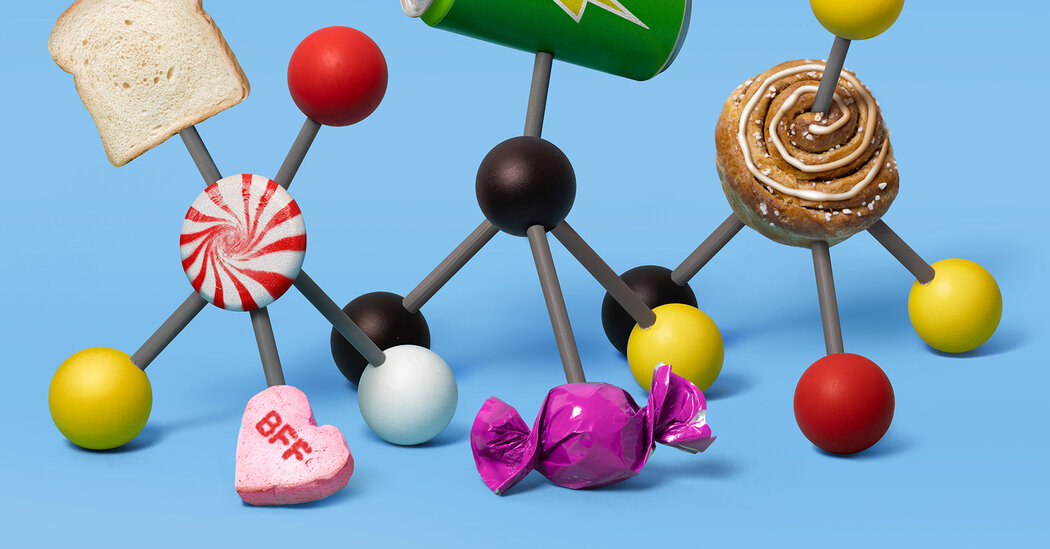
Two States Have Proposed Bans on Common Food Additives Linked to Health Concerns
04/14/2023Newly proposed bills in California and New York are putting food additives — the chemicals manufacturers add to food to act as preservatives or to enhance color, texture or taste — under the microscope.
The state legislators are seeking to prohibit the manufacturing and sale of products containing additives that have been linked to cancer, neurodevelopmental issues and hormone dysfunction. The five additives named in the bills are most commonly found in baked goods, candy and soda and are almost totally banned in food products in Europe. Several health associations, including the Endocrine Society and the American Academy of Pediatrics, have raised concerns about the potential health harms of food additives as a whole.
The bills, if approved, would both go into effect in 2025. The sponsors of the California bill, Assemblyman Jesse Gabriel and Assemblywoman Buffy Wicks, said the restrictions would especially protect children, who are more susceptible than adults to the potential risks.
“Kids eat more, pound for pound,” said Dr. Leonardo Trasande, a professor of pediatrics at NYU Langone Health who specializes in environmental health. “Their developing organs are especially vulnerable.”
The New York Times asked experts about these five additives and how to avoid or limit exposure if you are concerned.
What are the five additives in the bills?
When deciding which to include, the state legislators, collaborating with the nonprofits Consumer Reports and the Environmental Working Group, looked for additives that were prohibited in Europe and still widely used in the U.S., and where research showed strong evidence of health risks.
“These five were truly the worst of the worst,” said Scott Faber, senior vice president of government affairs at the Environmental Working Group.
Red dye No. 3 is used in nearly 3,000 food products, including icings, nutritional shakes, maraschino cherries and peppermint-, berry- and cherry-flavored candies. It has been shown to cause cancer in animals, which prompted the U.S. Food and Drug Administration to ban its use in cosmetics in 1990. At the time, the agency said it would work to extend the ban to food, but the chemical remains in use today. There are also concerns that it and other synthetic food dyes may contribute to behavioral problems, such as hyperactivity, in children.
Titanium dioxide acts as a whitener, color enhancer and anti-caking agent in thousands of food items. It’s present in many candies, as well as baked goods, creamy salad dressings and frozen dairy products, like cheese pizza and ice cream. A safety assessment conducted by the European Food Safety Authority in 2021 concluded that titanium dioxide damages DNA and can harm the immune system, resulting in its ban in the E.U. in 2022.
Brominated vegetable oil serves as an emulsifier in fruit drinks and sodas. Research in rats — including a study published by the F.D.A. in 2022 — suggests that brominated vegetable oil acts as an endocrine disrupter, especially affecting the thyroid hormone. An earlier study found that it can also harm the reproductive system. Because of its potential risks, many large brands, including Coca-Cola and Pepsi, recently stopped using the chemical, but it’s still in some smaller and grocery store beverage brands.
Potassium bromate is primarily found in baked goods, including breads, cookies and tortillas, where it acts as a leavening agent and improves texture. The additive is classified as being “possibly carcinogenic to humans” by the International Agency for Research on Cancer, based on studies conducted in animals.
Propylparaben is a preservative used in packaged baked goods, particularly pastries and tortillas. It’s also present in many cosmetics and personal care products. Numerous studies, in humans and animals, indicate that propylparaben acts as an endocrine disrupter and affects male and female reproductive health.
“If you need to start somewhere, these five are great,” said Dr. Sheela Sathyanarayana, a professor of pediatrics at the University of Washington who researches endocrine disrupters. “They have strong health data, they are widely used in many products, so likely there’s very large-scale exposure.”
How does the F.D.A. regulate these additives?
In response to the California bill, which was released ahead of New York’s, a coalition of food industry companies wrote an opposition letter stating that, “All five of these additives have been thoroughly reviewed by the federal and state systems and many international scientific bodies and continue to be deemed safe.” A spokesman for the National Confectioners Association, a trade organization that represents candy manufacturers, echoed this in an email to The Times, saying their members adhere to F.D.A. guidelines.
An F.D.A. official wrote in an email to The Times that the agency evaluates food additives based on a number of factors, including the “amount expected to be consumed (dietary exposure)” and “laboratory studies supporting safety.”
In practice, however, many chemicals are approved under a provision known as Generally Recognized As Safe, which states that a food additive can forego review by the F.D.A. if it has been deemed safe by “qualified experts.”
If concerns arise after a chemical is already approved, or if new, relevant research becomes available, “The F.D.A. does re-evaluate the safety of ingredients,” the agency official wrote. For example, the F.D.A. reviewed the evidence about titanium dioxide after the E.U. decided to ban it in 2022. The resulting report determined that there was “no evidence to suggest dietary exposure to the additive is a concern for human health.”
One point of contention is that the vast majority of the research on these additives has been done in animals because it is difficult (and unethical) to conduct toxicology research in humans. As a result, “It’s impossible to say that eliminating Red 3 or titanium dioxide from the American diet will reduce the number of people who suffer from cancer by a certain amount with total precision,” Mr. Faber said. “But anything that we can do to reduce our exposure to carcinogens, whether known or suspected carcinogens, is a step in the right direction.”
Dr. Sathyanarayana added that, “Although one individual food may not have a potentially harmful exposure concentration, the fact that we eat so many foods, it starts to add up in the body. And our regulatory system misses that entire concept.”
How can I avoid these additives if I’m concerned?
The best way to steer clear of potentially hazardous food additives is to avoid eating prepared, processed foods and instead stick to fresh ingredients. If you are buying something packaged, be sure to read labels. Dr. Sathyanarayana said a good rule of thumb is to opt for foods with short ingredient lists and to skip foods with ingredients you can’t pronounce. She mentioned the preservatives butylated hydroxyanisole (BHA) and butylated hydroxytoluene (BHT), sodium nitrate and sodium nitrite, and meat with bovine growth hormone as other chemicals to try to avoid.
According to the Environmental Working Group, over the past few years, several food manufacturers and grocery store chains have stopped using or selling products containing some or all of these additives. All five of the additives have chemical substitutes that serve the same purpose and have been deemed to be safer for human consumption — but they’re more expensive. If the bills are passed, it could motivate more brands to follow suit because it might not be economically prudent to produce one batch of products for California and New York and another for the rest of the U.S.
Some experts say the bills don’t go far enough. Instead, they say a complete overhaul of the F.D.A.’s review process is necessary.
“While I appreciate that it’s expedient to focus on five chemicals, it really misses a broader problem and a systemic problem,” Dr. Trasande said. In a policy statement he and Dr. Sathyanarayana wrote on behalf of the American Academy of Pediatrics, they call for nine changes to how the federal government regulates food additives.
Similarly, Mr. Faber called the Generally Recognized As Safe review process a “loophole” that should be closed, saying that many of the outside experts who do the reviews are employed by the chemical companies that manufacture the additives.
“Consumers can certainly read labels and avoid these chemicals, but it shouldn’t be up to consumers to keep us safe,” he said. “We have an F.D.A. that was charged in 1958 to ensure the safety of these food chemicals, and the F.D.A. has let us down.”
Source: Read Full Article

